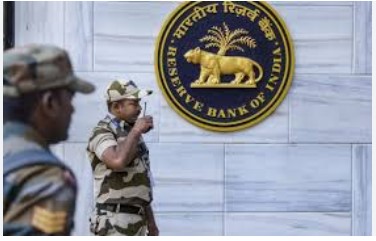Context:
Recently, the Reserve Bank of India (RBI) has identified unfair practices by banks that are leading to overcharging of interest on loans.
More on the news:
- The Reserve Bank of India (RBI) has advised banks and Non-Banking Financial Corporations (NBFCs) to refund excess interest and other charges levied on borrowers.
- This advisory comes as a response to the discovery of unfair practices during RBI’s onsite examination of banks and NBFCs for the period ending March 31, 2023.
Unfair Practices by Banks:
- Charging Interest from Date of Sanction: Some banks were found charging interest from the date of loan sanction or execution of the loan agreement rather than from the actual disbursement date.
- Interest on Disbursed Cheques: In cases where loans were disbursed by cheque, interest was charged from the date of the cheque issuance, not from the date when the cheque was encashed by the customer.
- Incorrect Interest Calculation: Banks were observed charging interest for the entire month in cases of disbursal or repayment instead of only for the period when the loan was outstanding.
- Collecting Advanced Instalments: Banks collect one or more instalments in advance, considering the entire loan amount for charging interest.
RBI’s Directive:
- The RBI has instructed banks to distribute loan funds digitally rather than issuing cheques.
- RBI directed banks and NBFCs to review their practices related to loan disbursal, interest application, and other charges.
- Corrective actions, including system-level changes, are mandated to address the highlighted issues, ensuring fairness and transparency.
RBI’s Stance on Interest Rate Policy:
- RBI’s Fair Practices Code guidelines, issued in 2003, emphasize fairness and transparency in interest charged by the lenders.
- RBI views non-standard practices of charging interest unfavourably, as they deviate from the principles of fairness and transparency.
Recent Initiative by RBI:
- Introduction of Key Fact Statement (KFS): Banks must issue KFS to borrowers in simple language, providing standardised information about loans, including interest rates, EMIs, and charges.
- Borrowers are required to acknowledge understanding of the loan proposal via KFS.
- Effective from October 1, 2024, for all fresh retail and MSME loans.
Borrower Rights Regarding Interest Rate Changes:
- Banks are required to inform borrowers clearly about the impact of changes in benchmark interest rates on their loans, including adjustments in EMIs and/or tenure.
- Borrowers should be notified immediately about any increase in EMIs or tenure due to interest rate changes.
- Borrowers should also be provided with the option to switch to a fixed interest rate, as per the institution’s policy.
RBI’s Role in Regulating Interest Rates
The Reserve Bank of India (RBI) plays a critical role in regulating interest rates in India.
Monetary Policy Formulation:
- One of RBI’s key objectives is maintaining price stability while promoting economic growth.
- It achieves this through monetary policy tools, primarily by influencing short-term interest rates.
Monetary Policy Tools:
- Repo Rate: The rate at which RBI lends short-term money to commercial banks.
- Reverse Repo Rate: The rate at which RBI borrows short-term money from commercial banks.
- Open Market Operations (OMO): RBI buys or sells government securities to influence liquidity and indirectly impact interest rates.
- Cash Reserve Ratio (CRR): The portion of bank deposits that banks must maintain with RBI as reserves.
- Statutory Liquidity Ratio (SLR): The portion of bank deposits that banks must invest in government securities.
Impact on Bank Lending Rates:
- Changes in the repo rate influence the cost of funds for banks.
- Banks typically adjust their lending rates (prime lending rate, base rate, etc.) based on the repo rate.
- Lower repo rates encourage banks to lend at lower rates, stimulating economic activity.
- Higher repo rates discourage borrowing and control inflation by reducing money supply.
Also Read:
Supersonic Missile-Assisted Release of Torpedo (SMART) system

